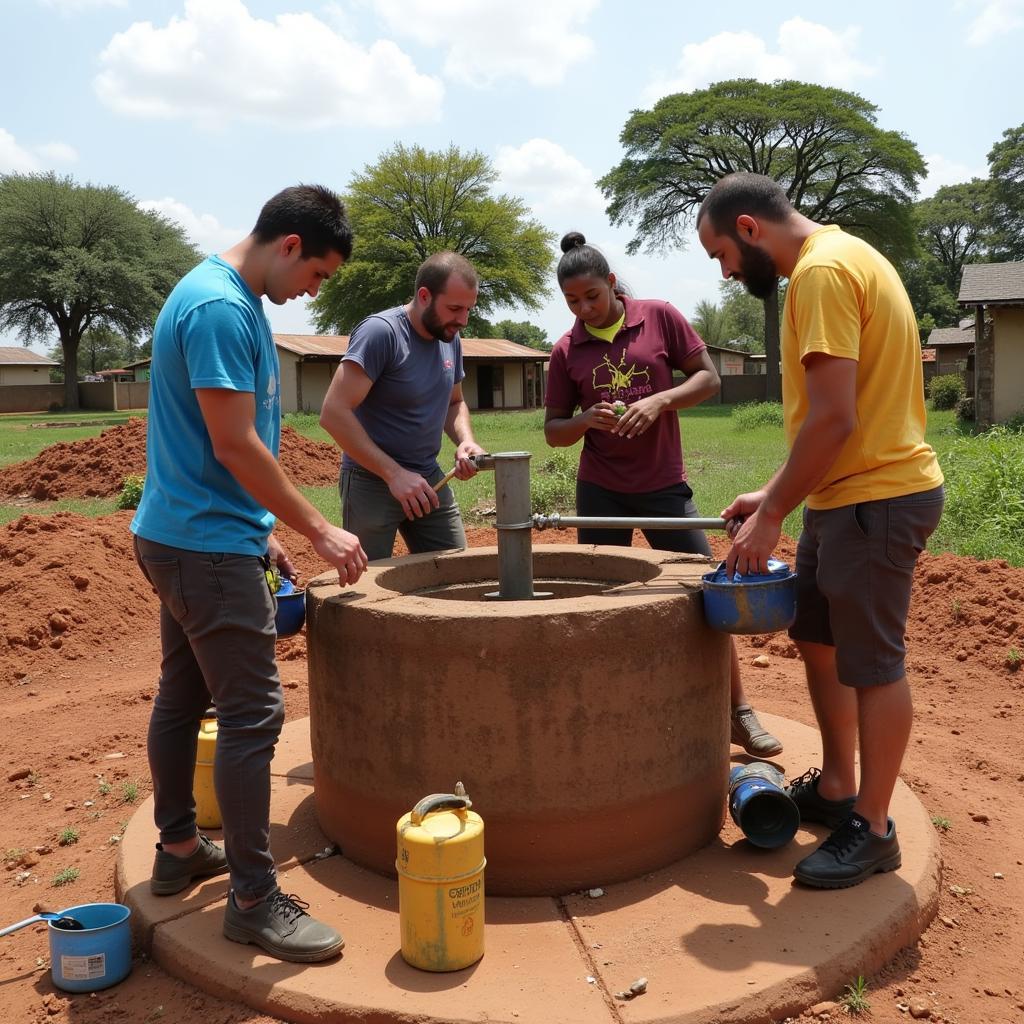Exploring the Countries in the African Union
The African Union, a continental body encompassing a diverse range of nations, plays a crucial role in promoting unity and development across Africa. Understanding the countries in the African Union is key to grasping the continent’s rich tapestry of cultures, economies, and political landscapes. This article will delve into the significance of the African Union and explore the vibrant countries that make up this powerful organization. Just after its formation, many asked how many countries are there in the african union?
A Continent United: The Purpose of the African Union
The African Union, established in 2002, succeeded the Organization of African Unity (OAU). Its primary goal is to accelerate the political and socio-economic integration of the continent. This involves promoting peace, security, and stability; fostering democratic governance and human rights; and driving sustainable development. The AU also plays a vital role in representing Africa on the global stage, advocating for its interests and fostering partnerships with international organizations.
The AU’s vision extends beyond political and economic cooperation. It also aims to preserve and promote African cultural heritage, recognizing the continent’s rich and diverse traditions. This encompasses supporting artistic expression, protecting cultural sites, and fostering intercultural dialogue.
Navigating the Member States: Who are the Countries in the African Union?
The African Union boasts a membership of 55 sovereign states, each contributing to the organization’s diverse tapestry. These countries represent a vast array of cultures, languages, and geographical landscapes, from the deserts of North Africa to the lush rainforests of Central Africa and the savannahs of the East. The number of countries in african union signifies the collective strength and potential of the continent.
Regional Blocs within the African Union
Within the African Union, several regional economic communities (RECs) exist, fostering closer cooperation among neighboring countries. These blocs address specific regional challenges and promote economic integration within their respective areas. Examples include the Economic Community of West African States (ECOWAS), the Southern African Development Community (SADC), and the East African Community (EAC).
Challenges and Opportunities for the Countries in the African Union
While the African Union has made significant strides towards its goals, the countries in african union face various challenges. These include persistent poverty, political instability in some regions, and the impacts of climate change. However, the continent also possesses immense potential, including vast natural resources, a burgeoning youth population, and a growing entrepreneurial spirit.
“The African Union represents a powerful force for positive change on the continent,” says Dr. Anika Mamadou, a prominent political analyst specializing in African affairs. “By fostering collaboration and addressing shared challenges, the AU is helping to unlock Africa’s enormous potential.”
The Future of the African Union
The African Union’s agenda continues to evolve as it adapts to emerging challenges and opportunities. Key priorities include strengthening democratic governance, promoting human rights, and accelerating economic development through initiatives like the African Continental Free Trade Area (AfCFTA). This ambitious project aims to create a single continental market for goods and services, boosting intra-African trade and driving economic growth.
“The AfCFTA holds the key to unlocking Africa’s economic potential and transforming the lives of millions,” states Professor Kwame Asante, an economist specializing in African trade. He adds, “By breaking down trade barriers and fostering greater integration, the AfCFTA can create jobs, stimulate innovation, and drive sustainable development.” It is clear to see why many search how many countries in african union.
Conclusion
The countries in the African Union represent a vibrant tapestry of cultures, economies, and political systems. By working together under the umbrella of the AU, these nations are striving to overcome challenges, unlock their vast potential, and build a brighter future for Africa. Understanding the countries in the african union is crucial to appreciating the complexities and opportunities that lie within this dynamic continent. Exploring the diversity and interconnectedness of these nations offers valuable insights into the continent’s past, present, and future.
FAQ
- What is the main goal of the African Union? To promote unity, development, and integration across Africa.
- How many countries are members of the African Union? 55 sovereign states.
- When was the African Union established? 2002.
- What is the AfCFTA? The African Continental Free Trade Area, aimed at creating a single continental market.
- Where is the headquarters of the African Union located? Addis Ababa, Ethiopia.
- What were some of the challenges faced by the countries in the african union? Poverty, political instability, and climate change.
- What are some of the opportunities for growth in the african union? Vast natural resources, a young population, and entrepreneurship.
Are you curious about the specific roles of individual countries within the African Union or the impact of the organization on specific regions? Perhaps you’d like to delve deeper into the history of the AU and its predecessor, the OAU? Explore further with these related articles: african countries forming union on lines of european union.
Need more assistance? Contact us 24/7: Phone: +255768904061, Email: kaka.mag@gmail.com, or visit us at Mbarali DC Mawindi, Kangaga, Tanzania.


